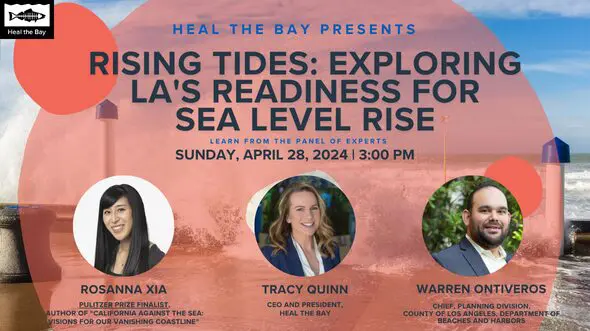Follow the “Heart of Los Angeles”
Of course I knew about the Los Angeles River. Growing up for a few years right next to the huge concrete channel and biking near Griffith Park where it is lush and green, I had seen the L.A. River be both storm drain ditch and real natural river. But these two faces, these two memories were separated by more than 10 years of living, and there are few things more enlightening like learning the context, the backstory of the places we thought we were already familiar with.
This past Sunday, on the recommendation of a coworker, I took the “Tour the L.A. River” tour hosted by Jenny Price and organized by Hidden Los Angeles. Jenny Price is an environmental writer and longtime advocate of river revitalization efforts. Hidden LA was started by Lynn Garrett as an effort to break down the stereotype of LA as characterless city with no beauty or depth – a perspective sometimes promulgated by us Angelenos.
The tour is a nine-stop, 40-mile tour by carpool caravan, down local side streets and sometimes shady parking spots. At each stop, Jenny Price gives history and context of the river as it flows down from its headwaters through both concrete-channels and soft-bottom, natural spaces.
“Think of your favorite place to visit, think of your favorite place to eat,” Jenny begins. “None of those places, none of us, in fact would be here if it wasn’t for the L.A. River. Yet people still laugh at the notion that L.A. has a real river.”
Jenny also makes sure to dispel common myths. “L.A. is not a desert!” Sure, we have a Mediterranean and semi-arid climate, but when the Spanish came to the basin from the north they found what they described as a ‘lush green valley’, ideal for agriculture and perfect to establish a settlement.” Quite a bit different from the hazy city-skyline and congested freeways we normally imagine when we think of our city.
The L.A. River is the reason the city exists, its waters were the life-blood that nurtured the city’s growth. Yet for all our dependence, as a whole we treat it as an outcast, good only as a movie lot or watery trash chute ending at the ocean –L.A.’s pariah.
But there is hope, the designation by the EPA in 2010 of the river as a “traditional navigable waterway”, has opened a series of regulatory enforcement that means city, state and federal agencies must begin to treat the river like any other natural river and not simply a flood control channel.
During the tour, Jenny pointed out the projects that are part of the larger LA City’s River Revitalization Master Plan, a plan designed to rehabilitate LA communities by revitalizing the river, creating value, capturing community opportunities and greening neighborhoods. One of the stops, Marsh Park, was engineered to double as a stormwater infiltration zone, capturing runoff from the nearby neighborhoods treating and infiltrating the water instead of dumping it directly into the river. We also stopped at Maywood Riverfront park, where Jenny talked about the great environmental and economic benefits revitalizing the river can bring to park starved neighborhoods such as Maywood. Amongst our group was Cassie Gardener of East Yards Communities for Environmental Justice who talked about the disproportionate health effects on inland communities from the major freeway (I-710) and nearby transportation corridor (Alameda Corridor).
Under a similar vision of bridging environmental and social issues, Heal the Bay is endeavoring a similar project in South LA. The WAYS Reading and Fitness Park is designed to be a multi-benefit park that will serve as an outdoor classroom, community green space, fitness area, and a water quality improvement project for the watershed and for a community that is already desperately lacking park space.
Our tour ended with a visit to the Dominguez Gap Wetlands, a roughly mile-long stretch of wetland habitat project of the LA County Flood Control District designed to “return important ecological functions of water quality improvement, wildlife habitat, and aquifer recharge to the urban lower Los Angeles River.” Nearing the end of the day, a walk along mile-long stretch of native and aquatic plants and water is striking reminder of what the concrete channel it runs alongside must have looked like to the settlers of the valley. Watching the lush Dominguez Gap wetlands rub shoulders with the concrete L.A. river was a strikingly succinct summary of the whole tour.
Walking along the river sometimes we walked along sunlit jogging paths with native California sage, and sometimes we walked down dirty foreboding tunnels underneath roaring train tracks.
We’ve treated the river well, poorly, and even worse at different places. Revitalizing the LA River is about breathing life into the heart that connects all of Los Angeles, and ultimately about revitalizing our own communities and collectively our city.
Thanks go out to Jenny Price and Hidden LA for organizing an eye-opening and fantastic trip down history and time. I highly recommend taking the tour yourself and ultimately doing what Jenny asked of us who took the tour that day: “Tell someone about the river! Tell them to come and see it for themselves.”
— Stephen Mejia
Heal the Bay’s Urban Programs Coordinator
Come to the Los Angeles River Center March 5-19 for Heal the Bay’s Speakers Bureau training and help spread the word about solutions to pollution.



